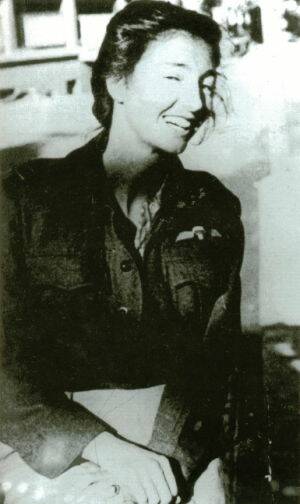★★★★
“Truth which proves to be just as exciting and interesting as any fiction.”

 In World War II, the British SOE (Special Operations Executive) recruited and trained a number of women agents for insertion into occupied territory. There, they risked torture and execution, while carrying out missions of intelligence-gathering, subversion and sabotage. The exploits of some have received the recognition they deserve (such as Violette Szabo, who received both Britain’s George Cross and the French Croix de Guerre), but most seem to have slid through the cracks of time – Binney’s book is a solid and commendable effort to save at least a few from historical oblivion.
In World War II, the British SOE (Special Operations Executive) recruited and trained a number of women agents for insertion into occupied territory. There, they risked torture and execution, while carrying out missions of intelligence-gathering, subversion and sabotage. The exploits of some have received the recognition they deserve (such as Violette Szabo, who received both Britain’s George Cross and the French Croix de Guerre), but most seem to have slid through the cracks of time – Binney’s book is a solid and commendable effort to save at least a few from historical oblivion.
After a introductory chapters on agent recruitment, training and life in general, the book devotes a chapter to each of ten agents. Their backgrounds, characters, experiences and fates cover as wide a range as imaginable. There’s Virginia Hall, an American citizen who had a wooden leg but still climbed across the Pyrenees to get from France to Spain. Pearl Witherington, who controlled an entire region of French Maquis fighters after D-day. Szabo, who was executed in Ravensbruck. Paola del Din, aged 20, had just four days training for her work as a courier.
Perhaps most fascinating of all is Christina Granville (right), born Krystyna Skarbek in Poland. Described as “the most capable of all SOE’s women”, with “lightning reactions…extraordinary stamina and agility.” She could talk the Gestapo into releasing captured agents, and also persuaded the garrison at Larche to surrender. Her “film-star assurance and glamour” meant men hurled themselves at her feet: one spurned lover threw himself into the Danube, though the river, unfortunately, was frozen at the time. After surviving the war, however, another unwanted beau stabbed her dead in 1952. A movie of her life, starring Sir Winston Churchill’s daughter, was mooted but never occurred. An opportunity still awaits.
The book’s main flaw is less to do with the author than time; thanks to bureaucratic pruning and even a fire, SOE records are “maddeningly incomplete”. This means stories frequently have gaps or peter out, but this is inevitable when you write a historical record, 60 years after the event. Binney does occasionally get bogged down in tedious detail, but on the whole, this is fascinating reading. As the book concludes, “these women were to show…valour, determination and powers of endurance…They had to be alert, quick-witted, calm and unruffled, while constantly playing a part.” These are stories which deserve to be told.
By: Marcus Binney
Publisher: Coronet (UK), 2002, £7.99




